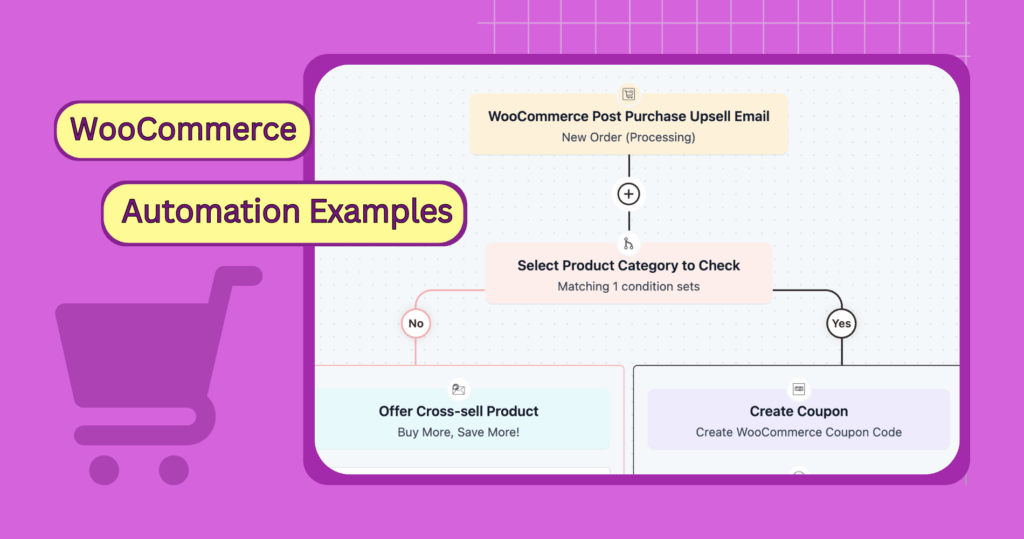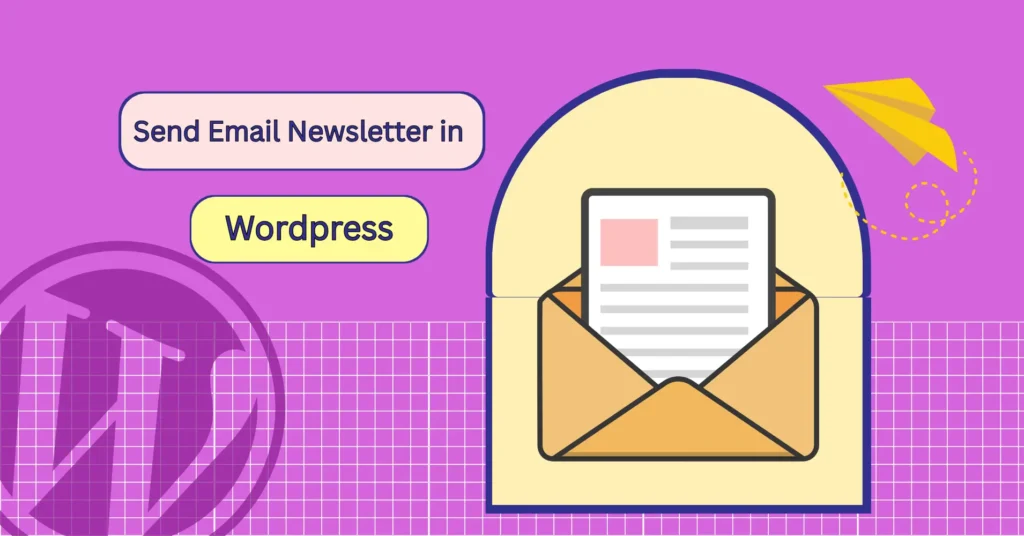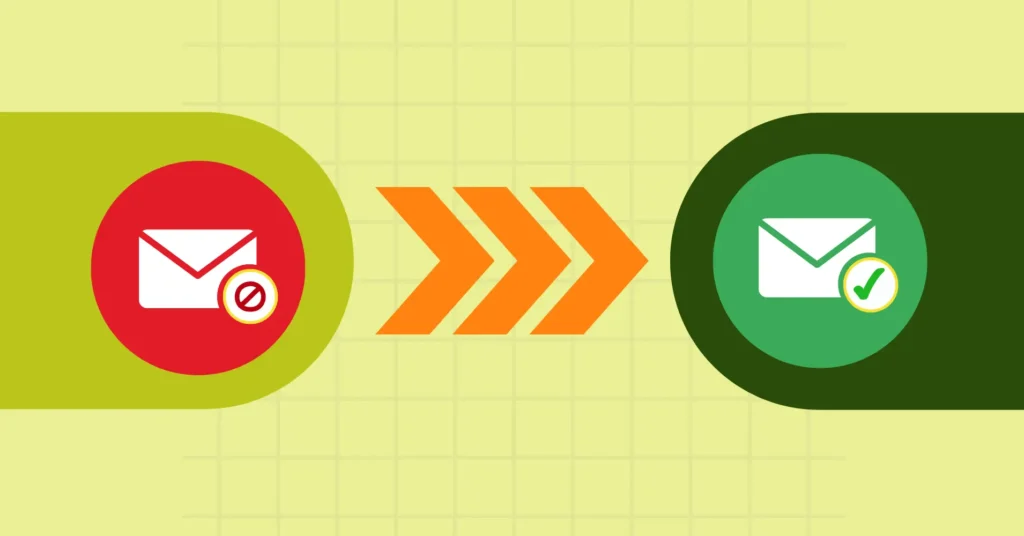
WordPress Emails Going to Spam? Fix it Once and for All!
If you’re managing a serious website, you wouldn’t want to send spam emails from your website. Your WordPress site may send tons of important emails every day, and you’d want these emails to drop right into your user’s inboxes.
But even if you don’t intend to spam, you may notice that your WordPress emails are going to spam. This is bad for your website’s reputation. Nobody likes spammers, and your users wouldn’t like receiving your clean emails in their “spam” folder.
This issue can become more serious. In fact, if you don’t take care of this issue immediately, your email address and domain will get blacklisted for consistently sending spam. As a result, spam filters will block any future emails from your domain and email address. Sounds horrific, right?
Don’t worry, we know why WordPress emails may go to spam and how to prevent the issue. So without further ado, let’s solve the issue once and for all!
Why do emails go to spam?
Before we get into WordPress emails and how they end up in spam, it is wise to learn what is spam and why emails go to spam.
Spam or junk emails are unnecessary emails sent in bulk without the recipients’ consent.
– Wikipedia
Since email helps businesses contact people, some people tried to play cheeky. Using bots, they sent out tons of emails that make no sense to the recipients. People use email to maintain essential communication, and these kinds of emails just don’t help their experience.
To prevent such spammers, most email clients use a filtering process. This is called spam filtering.
Spam filtering ensures a junk-free inbox and improves the email user’s experience. However, the problem with spam filtering is that the process isn’t solid. Unless spam filters can detect spam emails accurately, genuine emails are often at the risk of being red-flagged.
The best way to prevent your emails from going to spam is to learn and master the best practices for sending emails. But WordPress’s email deliverability issue can persist even if you’re following the best practices.
So you need to know how WordPress emails go to spam before you can prevent it from happening.
Subscribe to Our Newsletter
Get our blog articles, tutorials, and information delivered to your inbox!

Why are your WordPress emails going to spam?
Most WordPress emails are important notifications and updates, which have nothing to do with spam. But even when they’re not intended for spamming, you’ll notice some WordPress emails going to your user’s spam folder. This can happen to almost any WordPress site because of the way WordPress emails are sent.
Why?
Let’s find out!
1. WordPress utilizes wp_mail() PHP function
WordPress is based on the PHP programming language. By default, it’s set to package emails via wp_mail() PHP function. So whenever an email is triggered from WordPress, it packages an email via the PHP mailer and sends it to your web host for processing.
PHP mailer isn’t an optimized method for sending emails. Email clients, especially Gmail, know that most emailing bots utilize PHP servers. Through PHP mailers, they can send out thousands of emails in no time. Hence, email clients block or filter PHP emails in the spam folder.
2. Email Spoofing
Spoofing is similar to spamming. Email clients want to be able to check and show the sender’s genuine identity. One of the regulations to avoid spam while sending emails from your website is that the emails should be sent from your domain.
But because of how they are configured, plugins such as Contact Form 7 cause spoofing by not displaying the original sender’s identity.
By default, WordPress utilizes the From address of a WordPress plugin to populate the sender’s name and email address. On the other hand, plugins such as Contact Form 7’s From name and address are [Your-name] and [your-email]. As a result, WordPress attempts to send an email from the user’s email address when someone submits a form. Since the email is actually being sent from your website and not from the sender’s email address, spam filters identify such emails as spam.
3. Your hosting server’s IP is already banned
Sometimes WordPress emails can go to spam even if you’ve done everything right. This usually happens when you use shared hosting servers. If you’re using shared hosting, there’s a good chance that someone has been sending junk emails using the same server you’re in.
Besides, some hosting servers simply don’t support PHP emails.
Hence, if your hosting server’s IP address is blacklisted for sending junk emails, or if it doesn’t support PHP emails, your WordPress emails, such as emails triggered from WPForms won’t be sent or end up in spam.
How to fix WordPress emails going to spam?
WordPress emails can go to the spam folder for several reasons. In fact, most WordPress users have run into the same problem at least once.
So don’t panic if your WordPress emails are going to spam. Here are the solutions you can try to avoid WordPress emails are going to spam:
1. Check if WordPress is sending any emails at all
The first way to solve WordPress’s email deliverability issue is to troubleshoot it yourself. This means you need to check if WordPress is sending any emails at all. To do so, you can use a plugin named Check Email.
This email deliverability checker plugin provides an easy way to test whether your emails are getting sent from WordPress or not. Download and install the plugin on your site and attempt to send a test email to any email address you want. If it’s successful, it means that WordPress is sending your emails.
2. Use the correct From address
The next step is to use the correct From address. The correct From address format for any site should be [email protected]. This means if your site’s domain is www.fluentsmtp.com, your admin email address should be [email protected].
Create a custom email address for your domain by following your hosting or email service provider’s instruction if you don’t have one already. You can also check our tutorial on creating a custom email address for your domain.
Once you have created an email for your website, you need to change the From address of the plugins that trigger WordPress emails. For example, if you’re using Contact Form 7, you need to go to your form’s Settings>Mail tab to change the From address.
Note that different plugins have different prefixes or shortcodes to identify and populate your website’s admin email address. You can either use the shortcode or copy and paste your admin email address.
3. Use an SMTP plugin
Using an SMTP plugin is the simplest one-step solution to solving the WordPress email deliverability issue. The standard protocol for sending emails is SMTP. Using an SMTP plugin, you can tell WordPress to use an SMTP mailer service instead of PHP.
FluentSMTP is an entirely free SMTP plugin that comes with an easy way to set up SMTP email services. You can set up multiple SMTP servers, view email logs and resend emails using FluentSMTP. So we recommend downloading FluentSMTP for solving your WordPress site’s email deliverability issues.
Download FluentSMTP
(100% Free)
Get the most powerful SMTP plugin for free and hit the recipient’s inbox with your WordPress emails

Once you’ve downloaded FluentSMTP, configure it with any email service you want to use. FluentSMTP supports SMTP configuration with Gmail, Google Workspace, Amazon SES, SendGrid, MailGun, SendInBlue, PepiPost, SparkPost, etc.
4. Use a transactional email service
WordPress can send tons of emails depending on what you’re using. For example, if you receive too many form submissions and WooCommerce orders, using your hosting for sending form submission notifications and order confirmation emails will eventually harm your website’s speed.
Besides, a large number of WordPress emails sent using hosting servers go to spam. This means there’s a good chance that your hosting server’s IP address will eventually get blacklisted by email services.
Nothing can help your email deliverability if an email service provider has already blacklisted your IP address. For this reason, we recommend using a transactional email service.
Transactional email services are designed to ensure reliable deliverability for a large number of emails. They offer affordable email service, and many even offer a good amount of free emails. Hence, it is best to use a transactional email service instead of relying on your hosting for sending emails.
Note: Setting up a transactional email service with WordPress requires an SMTP plugin. So you’ll still have to use an SMTP plugin to route your emails with transactional email services.
Wrapping up
Email deliverability is a known issue on WordPress. We’ve tried to cover the most common issues, and you can easily solve the issue if you follow the above tips. But if you’re experiencing any other WordPress email deliverability issue, let us know in the comment section. We’d be more than happy to help!
Also, check out our blog for other WordPress tips such as a fix for WordPress revisions not showing and many more!

Nazir Himel
“Produce value through quality content” – is the motto I live by. Content Marketing, SEO, and Email Marketing are my primary interests and if I’m not busy with any of them, you’ll probably find me roaming around the city.
Table of Content
Subscribe To Get
WordPress Guides, Tips, and Tutorials












Leave a Reply